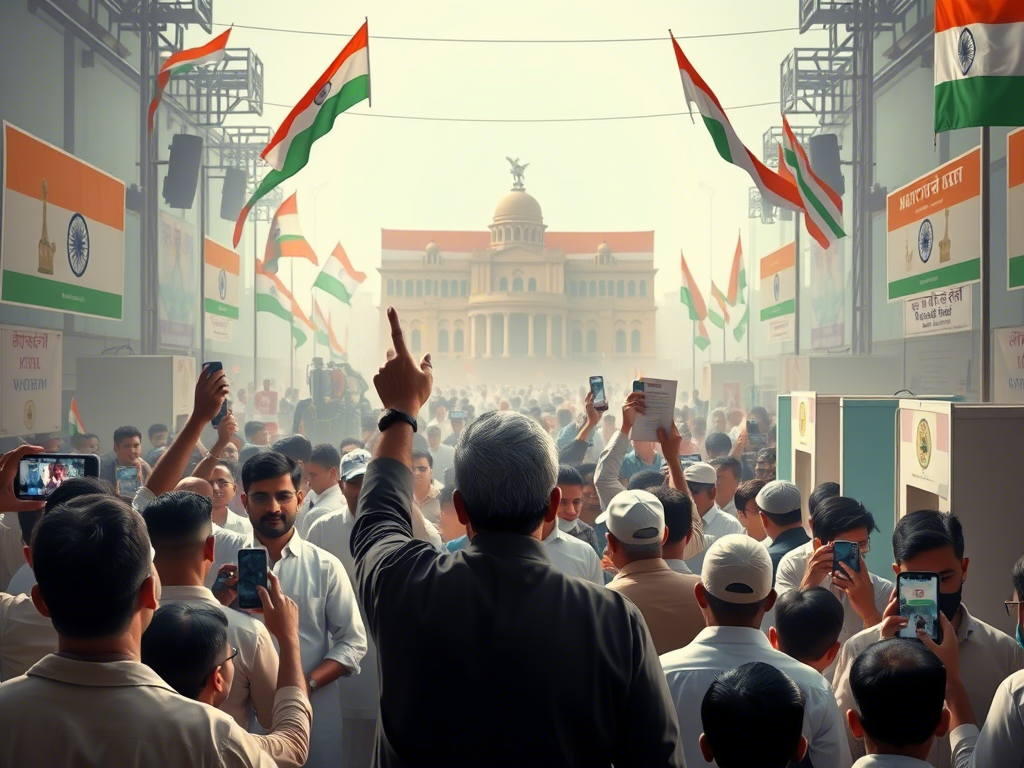Hydro Flask Travel Tumbler with Handle, Lid and Straw - Insulated Stainless Steel in 32 Oz Agave
$34.99 (as of December 3, 2025 14:48 GMT +00:00 - More infoProduct prices and availability are accurate as of the date/time indicated and are subject to change. Any price and availability information displayed on [relevant Amazon Site(s), as applicable] at the time of purchase will apply to the purchase of this product.)Introduction
The 2024 Indian General Elections were a pivotal event that reshaped the country’s political landscape. With nearly 900 million eligible voters, the elections witnessed a record voter turnout of 68%, highlighting the electorate’s active engagement in shaping the nation’s future. This article provides an in-depth analysis of the key outcomes, party performances, and future implications of the 2024 Indian General Elections.
Key Outcomes

BJP’s Continued Dominance
The Bharatiya Janata Party (BJP), led by Prime Minister Narendra Modi, secured a significant victory despite falling short of its target of 400 seats. The BJP won 240 seats on its own and 293 seats in coalition with allies in the National Democratic Alliance (NDA). This result marked a decline from their previous tally of 303 seats in 2019, indicating a shift in voter sentiment. The BJP’s ability to retain its stronghold in key states such as Uttar Pradesh, Gujarat, and Madhya Pradesh demonstrated its enduring appeal among a broad voter base.
Resurgence of the Opposition
The opposition coalition, known as INDIA, made substantial gains, winning 234 seats overall. The Indian National Congress (INC) alone increased its representation from 52 to 99 seats, achieving official opposition status for the first time in a decade. This electoral outcome has been interpreted as a clear signal of changing dynamics within Indian politics, highlighting the electorate’s desire for alternatives to the BJP’s rule.
Role of Regional Parties
Regional parties continued to play a prominent role in the 2024 elections. Mamata Banerjee of TMC, M.K. Stalin of DMK, and K. Chandrashekar Rao of BRS maintained their sway in West Bengal, Tamil Nadu, and Telangana, respectively. However, in some states, opposition votes became divided, thereby weakening the anti-BJP front. In Uttar Pradesh, the Samajwadi Party and the Bahujan Samaj Party did not combine against each other, allowing the BJP to maintain its sway.
Party Performances

BJP’s Strategic Success
The BJP’s strategic focus on nationalism, welfare schemes, and a centralized governance model played pivotal roles in shaping the outcome. The party’s ability to leverage its organizational strengths and a cadre system helped mobilize votes, particularly across rural and semi-urban districts. The strategic use of social media and data analytics was an important enabler for consolidating support.
Congress’ Revival
Under the leadership of Rahul Gandhi, the INC showed signs of revival at the 2024 elections. The Bharat Jodo Yatra, a mass outreach program, was instrumental in reconnecting the party with grassroots voters. However, despite these gains, the Congress continued to face structural weaknesses, including organizational inefficiency and an over-reliance on dynasty politics.
Regional Parties’ Influence
Regional parties maintained their influence by focusing on local issues and strong organization in their respective regions. However, they faced challenges in forming cohesive alliances and balancing state-specific priorities with national ambitions.
Future Implications

Impact on Democratic Institutions
The 2024 elections reignited concerns about India’s democratic health, with allegations of bias against the Election Commission and judiciary. The erosion of institutional autonomy and a reduction in free speech have become increasingly worrisome. Ensuring the independence of democratic institutions and addressing these concerns will be crucial for maintaining just and transparent governance.
Role of Media and Technology
Media and technology played a significant role in shaping public opinion during the 2024 elections. Social media platforms and news outlets were battlegrounds for political narratives, with the BJP using targeted advertisements to reach voters. Ensuring media neutrality and addressing misinformation will be vital for future elections.
Challenges Ahead
The 2024 elections highlighted deep ideological and communal polarization within Indian society. Addressing this polarization and promoting social cohesion will be essential for preventing further fractures. Additionally, the centralization of power under the BJP has raised concerns regarding the erosion of federalism and the need for equitable distribution of resources.
Road Ahead
The elections underscored the need for a strong and cohesive opposition to ensure democratic accountability. The INDIA alliance and Congress must focus on organizational rebuilding, grassroots engagement, and presenting a unified vision for governance. Strengthening federalism and addressing long-term policy reforms in areas such as unemployment, agrarian distress, and regional disparities will be critical for sustaining political stability and public trust.
In conclusion

the 2024 Indian General Elections were a defining moment in the country’s political history. While the BJP maintained its dominance, the resurgence of opposition politics and the evolving role of regional players highlighted the dynamic nature of Indian democracy. The road ahead will require a delicate balance between growth and inclusivity, centralization and federalism, and tradition and modernity.



